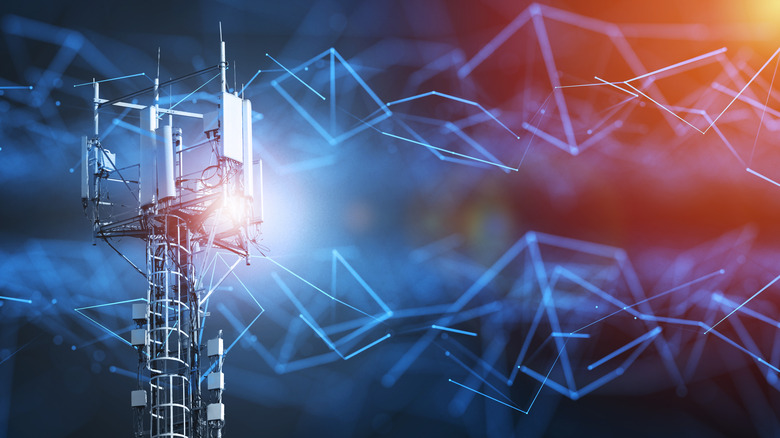Do Cell Phones Really Give Off Radiation?
Cell phones — like microwaves, power lines, or radios — do give off radiation. It's how they work — both cell phones and cell phone towers emit electromagnetic radiation, sending data through the air on radio waves. These frequencies are non-ionizing radiation at the lower end of the spectrum — even 5G, which is toward the top of the radio wave spectrum (per The New York Times), radiates at a lower frequency than visible light, and significantly lower than x-rays or nuclear radiation, both of which are known to be hazardous.
But how do we know that radio waves are safe — even 5G? The topic is controversial, with both sides of the debate accusing the other of being influenced by politics rather than science. Experts in the United States, for instance, have accused Russia of using its news outlet, Russia Today, to stoke fears of a "5G Apocalypse," according to The New York Times. On the other side, there has been criticism (per Healthline) that the World Health Organization's International EMF Project, which evaluates the safety of electromagnetic frequencies, is overly close to the telecommunications industry.
According to the World Health Organization, no dangers to human health have been conclusively linked with wireless networks. That doesn't mean, however, that 5G is without potential risk.
Are there health risks from cell phone use?
Electromagnetic radiation may cause slight, short-term tissue heating at a frequency of 1.8 to 2.2 GHz. This effect is insignificant and understood well, according to the European Commission.
Whether or not cell phone use is linked to cancer, however, is more mysterious, according to the Commission. Large studies of cell phone users have found no causal relationship, but other studies, mainly of animals or cells in lab settings, suggested negative health effects, leading the International Agency for Research on Cancer (part of WHO) to classify electromagnetic radiation as "possibly carcinogenic." This sounds more definitive than it is, according to the European Commission, which points out that aloe vera is also categorized as "possibly carcinogenic." Meanwhile, scientists have pointed out that brain tumor rates have not risen in the last several decades as wireless use has grown more common (per The Guardian).
WHO is publishing a complete health risk assessment on radio frequencies in 2022. But interestingly, because 5G operates at a higher frequency than earlier wireless technologies, it actually is less likely to penetrate human skin. "5G emissions, if anything, should be safer than previous generations," said Dr. Marvin C. Ziskin, a professor of radiology at Temple University, to The New York Times.

